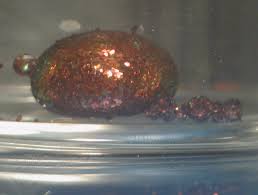Mechanisms are groups of moving objects that perform a certain action. We can find different types
of mechanism: gears, pulleys, levers, cams, linkages... For example to make
music with a piano, we need certain mechanisms to make the string vibrate.
-SIMPLE MACHINES-
-LEVERS:
Levers are used to give a mechanical advantage make easier lifting or moving
things. There are 3 types of levers:
-First class
levers: The
fulcrum is located between the load and the effort. E.g. a pair of scissors
-Second class levers: The load is
located between the fulcrum and the effort. E.g. wheelbarrow
-Third class levers: The effort is
located between the fulcrum and the load. E.g. fishing rod
-PULLEYS:

Pulleys make lifting a load easier. They change the direction of
rotation, the change in speed or as turning force. Using two or more pulleys together the force can be doubled. E.g. a pulley used to take water from a water well.

-WHEEL AND AXLE:
The wheel and axle consists of a wheel attached to an axle that rotate together. Applying a small force to the wheel, the axle can do a great force. E.g. doorknob.
-INCLINED PLANE:

An inclined plane is a flat surface with one end higher than the other. It is used for raising or lowering a load with less effort. E.g. a ramp used to move goods into a truck.
-WEDGE:
 A wedge is a triangular shaped tool (a small inclined plane). It can be used to separate, lift or hold an object. E.g. a wedge for keeping a car at place.
A wedge is a triangular shaped tool (a small inclined plane). It can be used to separate, lift or hold an object. E.g. a wedge for keeping a car at place.
-SCREW:

A screw is a mechanism that converts rotational motion into linear
motion. Like the other simple machines it can amplify force. The smaller the distance between the screw threads, the greater the mechanical advantage. E.g. a
screw for sticking two pieces of wood together.
-OTHER MECHANISMS-
-CAMS:
 A cam is a shaped piece of metal or
plastic attached to a rotating shaft. A cam mechanism has
three parts: cam, slide and follower. It changes rotational motion into
reciprocating motion (backwards and forwards in a straight line). Some types of
cam shapes:
A cam is a shaped piece of metal or
plastic attached to a rotating shaft. A cam mechanism has
three parts: cam, slide and follower. It changes rotational motion into
reciprocating motion (backwards and forwards in a straight line). Some types of
cam shapes:
 -Eccentric cam: produces uniform
reciprocating motion. It doesn't have the axle in the center of the cam.
-Eccentric cam: produces uniform
reciprocating motion. It doesn't have the axle in the center of the cam.
-Snail cam: it rises gently
and then it suddenly drops. It only works in one direction.
-Pear cam: the
follower doesn't move for half a turn, then it will gently rise and fall
-Four-lobed cam: for
each turn the follower will rise
-GEARS:
Gears consist of toothed wheel fixed to shafts. They interlock with each other. When two or more gears link together a gear train is formed.
The driver gear turns the driven gear by a hand or motor. If the driver gear turns clockwise the driven gear will turn anticlockwise. Some types of gears are:
 -Worm gears: change the direction of rotation through 90º. The worm drive has only one tooth and turns faster than the worm gear and has two teeth and turns much more slower. E.g. a worm gear mechanism for tightening guitar strings.
-Worm gears: change the direction of rotation through 90º. The worm drive has only one tooth and turns faster than the worm gear and has two teeth and turns much more slower. E.g. a worm gear mechanism for tightening guitar strings.

-Rack and pinion: they are used to turn rotaty motion into linear motion. The pinion is used to move a flat gear(rack).
-Bevel gears: it also changes the direction of rotation through 90º. The teeth are angled at 45º to fit together at right angles.
-LINKAGES:

 Linkages allow forces or motions to be directed where it is needed. They can be used to change the direction of motion, the type of motion and the size of a force. They are systems of rods or other materials connected by pivots. Some types of linkages are bell cranks (change direction of force 90º) and lazy tongs (different levers linked together). E.g. Lazy tongs used for jumping.
Linkages allow forces or motions to be directed where it is needed. They can be used to change the direction of motion, the type of motion and the size of a force. They are systems of rods or other materials connected by pivots. Some types of linkages are bell cranks (change direction of force 90º) and lazy tongs (different levers linked together). E.g. Lazy tongs used for jumping.
Simple machines, cams, gears and linkages help us in our daily life. They transform input motion into output motion. Linear motion (straight line), reciprocating motion (backwards and forwards), oscillating motion (backwards and forwards in an arch) and rotary motion (moving in a circle) are other types of movements mechanisms can do.
Here you can find from where I have searched the information:
-Class notes
- http://www.bbc.co.uk/schools/gcsebitesize/design/systemscontrol/mechanismsrev3.shtml
Here you can find the links to all the images:
https://docs.google.com/document/d/1OAgykAvHOaD8N_mH1mASwq0R0F1i1RErxH21Ow1jzvA/edit?usp=sharing



















